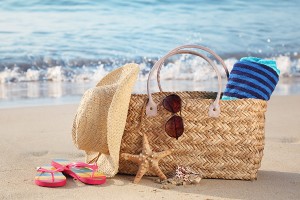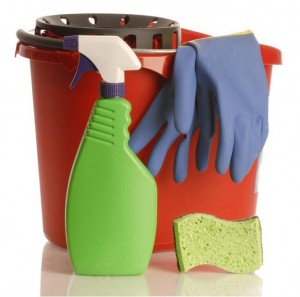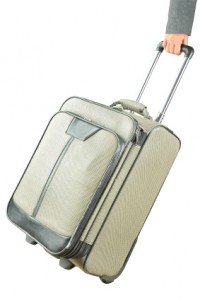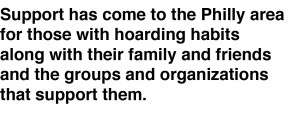Finding the time and energy to garden has been a challenge for me in the past few years. Our property seems to be getting bigger or am I getting older? Regardless of the reason, I’m not willing to give up the great exercise and satisfaction I get from planting my garden, so I need to get more organized to get it done. I also have to be satisfied with an hour or two here and there instead of a full day of gardening. After I planted my garden last year, I took pictures of the planters and the gardens and made a list of the plants I bought at the local nurseries.
Our garden shed was built on top of an old outhouse and frankly it could withstand a hurricane. It has a waist high counter and wooden shelving. We used leftover linoleum flooring from the kitchen for the floor. It’s just the right size to hold the following:
In the spring:
In the fall after the first killing frost:
After plants have been hit by frost, I like to fill in with fall décor so it doesn’t look so empty. I use some of the more colorful pots I emptied to hold mums and fill in with straw bales, pumpkins, cornstalks and gourds. Organize your gardening so it’s a pleasure, not a chore.
Clutter Tips:
Green Tips:
 Can you believe another school year has come to a close? They just fly by. Although it’s the last thing on most mom’s and dad’s minds in June, come late August, preparing for ‘Back-to-School’ can be a hectic time to recon with.
Can you believe another school year has come to a close? They just fly by. Although it’s the last thing on most mom’s and dad’s minds in June, come late August, preparing for ‘Back-to-School’ can be a hectic time to recon with.
As we begin the second month of summer, I want to share my annual routine in addressing this issue. Although, as you’ll see, I choose to get an early start; you still have the luxury of setting aside less than an hour to make the transition from summer to ‘Back to School’ stress and hassle free.
With that being said, I always use the last day of school as my barometer to get all my boys’ school supplies sorted, purged, donated, reorganized, and stored away until September. I’ve found few people that do it. Most wouldn’t even consider it. Believe it or not, being organized the first day of school starts with a little ‘to do’ list the final day of the current school year!
In our house, the last day of school signifies the official start of summer, and as you can imagine, in most every household, the excitement is palpable. Each year, I pick the boys up at school which allows me the opportunity to see how excited they are and the smiles on their faces when the bell rings and they charge out of the school. It’s also a wonderful opportunity to say goodbye to friends, teachers, and classmates. Going out to lunch continues the euphoria, and this is where I set the expectation of going home and organizing their school supplies for next year. Realistically, who would want to contend with this the last day of school? But, from start to finish, it only takes about fifteen to thirty minutes.
The first decision is to ascertain if their school bag is still in good enough condition to weather next year. If so, it is cleaned out and stored in our coat closet until September. If not, it is cleaned out and put in our donation pile. Moving on, the purging continues with pens, pencils, pencil cases, rulers, scissors, crayons, markers, folders, etc. The rule of thumb is trash, donate, or keep. Trash is immediately taken out, donations are put in our designated donation pile, and anything that can be used in September is stored in the school bag for next year. If their school bag is being donated, then, the supplies are stored in either a zip-lock bag or container until September.
You’ve only just read this. Yet, aren’t you breathing easier knowing when Summer ends, ‘Back-to-School’ is on auto pilot? Have a happy, safe, and enjoyable summer.
 I don’t know about you, but spring is my favorite time of year, and the last thing I want to do is spend my weekend or multiple weekends focusing on cleaning and organizing my entire home. Instead of pulling out that long list of spring cleaning duties, consider breaking up the list into bite size pieces to be completed throughout the year.
I don’t know about you, but spring is my favorite time of year, and the last thing I want to do is spend my weekend or multiple weekends focusing on cleaning and organizing my entire home. Instead of pulling out that long list of spring cleaning duties, consider breaking up the list into bite size pieces to be completed throughout the year.
Maintenance is a much easier solution and a tremendous time saver.
Pick Your Battles
Look at your list and determine the cleaning and organizing tasks that make the most sense for this time of year. For example, closets are a great place to start because this is the time of year we change from winter to spring/summer attire. Garages are another good area of focus. Now is the time to put away the snow blower and pull out the lawn mower. And, let’s be honest, things tend to get piled and tossed into the garage all winter, so it’s time for a garage clean-out. Your garden shed is another great fit for seasonal organizing. Inspect and sharpen your garden tools, take stock of your supplies, clean your clay pots and determine your tool storage area based on how often you use the tools. Also, with the onset of warmer weather comes the need to change to lighter blankets and comforters, and once the bed is stripped you can vacuum and turn the mattress to complete the process.
Maintenance is Key
Now that you have decided which areas make sense to organize during the spring season; let’s break the rest of that cleaning and organizing list into manageable tasks to be completed throughout the year. Baseboards, doors, and cobwebs can be dusted and cleaned during the winter when you’re stuck inside during a snowstorm. Lampshades and ceiling fans can be dusted at regular intervals when you dust the rest of your home. Draperies, blinds and carpets can be cleaned in the fall or the end of the summer. Many people have self cleaning ovens that can be cleaned any time of the year, and grease traps and stove filters are easy to replace or clean on an as needed basis.
Consistency is the Name of the Game
Having a consistent, year round routine will help you avoid investing large chunks of time in the spring. Instead, get out and smell the forsythia, spend time with family and friends, or do whatever makes you happier at this wonderful time of year. Organizing and cleaning are necessary for a functional life, so finding ways to spread it out and make it easier in the long run will save you endless hours each season.
When you are at a restaurant, in the car, or headed to the beach, do your children drive you crazy by fighting or by saying that they are bored? I have found several variations of a ‘busy bag/box’ on Pinterest, and decided to create my own. My bags have changed over the years accommodating items that will satiate my 4 year old as well as my 7 year old!
Below are some of my ‘Busy Bag’ ideas:
My Restaurant Bag contains:
When my children were toddlers, I used to pack lots of board books, large Duplo blocks, finger puppets, Crayola dough, laminated play dough mats, stacking cups and Fisher Price plastic animals. For older children, add Legos, playing cards, trivia questions, the game Uno, books, Mad libs, and maze books.
My Car Bag contains everything from my restaurant bag, plus the following:
A fun idea that I started — on a 10 hour trip to Myrtle Beach — was to get baby links from the dollar store and connect them from one car hook to the one across from it in the backseat, and a super hero traveled link to link every hour that passed. Also, since each of my children had a small version of the car bag next to them, with each activity organized inside a smaller container, there were no melt downs!
Taking a family of four to the beach is like a jigsaw puzzle. Everything needs to be organized and in a certain area or else it will be covered in sand or forgotten. Thanks to many invites to Thirty One parties I am well prepared for the beach with bags!
My Beach Bag is a system of smaller bags:
Staying organized, even on vacation, helps to keep my sanity, as well as my husband’s when the ice cream man rings his bell and both children start running towards him. All he has to do is reach in the pouch for the money and not waste any time looking for it. I hope I have inspired you to create your own “Bags” for whatever situation calls for it.
Have fun and safe travels this summer!
 There are a few basic components of your vacation you need to consider before you select certain articles and start to pack. If you are traveling by air, be aware of your carrier’s baggage restrictions. This is the time to be efficient with your space! Below are my 20 tips to help you pack like a pro:
There are a few basic components of your vacation you need to consider before you select certain articles and start to pack. If you are traveling by air, be aware of your carrier’s baggage restrictions. This is the time to be efficient with your space! Below are my 20 tips to help you pack like a pro:
Now zip your suitcase and go! Bon Voyage!

Along with four other Professional Organizers, I had the opportunity to attend a meeting of the Philadelphia Hoarding Task Force and was excited to find out that we are NOT ALONE!
The result of hoarding behaviors touches countless lives. The most obvious is the lives of those with hoarding habits, those who live with them, their children, family members, and close friends. Maybe, less obvious, is the effect of this life style on their surrounding communities. Often times there have been multiple attempts to deal with and support those with hoarding habits resulting in little change and outcomes that don’t last long. Interventions usually focus on having the person divest themselves of things that clutter their living spaces. Frustration, hard feelings are the typical results as little seems to penetrate the multifaceted web of commingled issues, emotions and unrelenting habits that have, more likely than not, spanned the individual’s life time.
This particular and persistent practice of collecting is the manifestation of a complex network of interpretations for the person who engages in hoarding behaviors. For many who are observing these hoarding tendencies, it is virtually impossible to understand, decipher, and make sense of the complexities involved in the condition. Working side by side with clients who engage in hoarding behaviors, I have heard very elaborate and creative explanations for their holding on to what looks like, to anyone else, seemingly useless items. Their ‘need’ to save things is logical in their view, however, the result of their logic is counterproductive to their desire to alleviate their situation that impacts themselves, their loved ones, and in some cases, their community.
Because the result of hoarding behaviors looks like disorganization and clutter, at first glance, it would seem like working with hoarding situations is perfectly suited for the organizing profession. Initially, that was the thinking of the pioneers of our profession until they began to notice that successful organizing methodologies, principles, and products did not seem to work with certain clients. During those early years, organizers tried to impact situations where shower rods became alternate hanging spaces for clothes, dining room tables became storage for piles of papers often flowing over to the accompanying chairs, and beds housed everything else leaving little to no room for the owner. The result, a sub group of NAPO was birthed. Back then it was called NSGCD (The National Study Group on Chronic Disorganization). Today, it is its own independent organization called The Institute for Challenging Disorganization (www.ChallengingDisorganization.org). Their mission is to provide education, research, and strategies to benefit people challenged by chronic disorganization.
Working with these situations for the past 11 years as well as being a member of NAPO and ICD, I have learned that simply talking about the ‘stuff’ with clients is limiting and often times futile. Getting to the reasons and explanations for their need to hold on to items helps to unlock the interpretation that justifies their hoarding behaviors and often times can loosen the grip of their ‘need’ to hold on to things. However, delving into the root cause of these tendencies is outside an organizer’s skill set and training. Teaming up with other professionals such as social workers and therapists, offers more hope for longer-lasting results.
Finding these opportunities to team up with other professionals working with people challenged with chronic disorganization has not been easy until recently when the Greater Philadelphia Chapter of NAPO (NAPO-GPC) was contacted and invited to participate on the Philadelphia Hoarding Task Force. An impressive list of local organizers accepted the invitation, and it was love at first meeting! Finally, we are NOT ALONE in our work with these clients!
Still in its infancy, the mission of the Philadelphia Hoarding Task Force, co-chaired by David Wengert from the Community Legal Services and Katherine Martin, Deputy Policy Director from the Mayor’s office, is to “ensure positive outcomes for those individuals who are impacted by hoarding.” Although the Task Force does not provide direct services, its role is to ensure access to resources, training for provider organizations, and education about hoarding in Greater Philadelphia”. The meeting that I attended with four of my collogues was comprised of representatives from the Philadelphia Police and Fire Department, Licenses & Inspections, Philadelphia Corporation for Aging, and Clutterers Anonymous, to name a few. Each of the representatives brought their unique perspective to the meeting. The shared conclusions was that the work of the Task Force should focus on the individual, not the problem, i.e. the ‘stuff’ and that this perspective should permeate all efforts made by the Task Force, especially in the educational trainings it provides.
A shared understanding of the complexity that leads to hoarding behaviors among the organizations that confront these circumstances, along with sharing resources, expertise, accountabilities, and services, was music to all of our ears!
Finally, we as organizers, can say, we are NOT ALONE in our work with clients who are struggling with habits of hoarding! Collaborating with other professionals helps us offer those challenged by hoarding habits a more holistic service approach, and a hopeful future.
Suggested Resources: